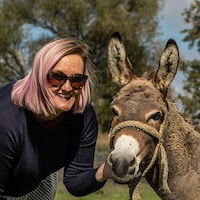This article examines two remarkable Mediterranean countries: Malta and Croatia. I’m excited to get started!
Being a resident of Croatia for over a decade and having traveled numerous times to the island nation of Malta, I’ll bring my perspective to the table, helping you discover more about these two destinations to help you plan your itinerary.
Skip Ahead To My Advice Here!
Let’s Compare: Country Vs. Country
We’ll explore what makes these countries tick. Both are distinctly European countries shaped by various powers and empires over the centuries.
Croatia was long a trading power that was pulled between the Venetians, Ottomans, and Habsburgs. Its more modern history saw it gain independence from Yugoslavia in 1991.
Likewise, Malta became independent from the British Empire in 1964. It also has a long history: once a stronghold of the Knights of St John, it has a strong Arabic influence. Both countries provide fascinating contrasts, a blend of East and West.
This guide to Croatia vs. Malta will take you through the must-see destinations, cultural treasures, and historical sights that draw people to both nations. Hopefully, it will help you decide between Croatia and Malta for your next European adventure.
Without further ado, let’s embark on a journey that will reveal the unique qualities that make Croatia and Malta so worth visiting!
7 Reasons To Visit Croatia
1. Rijeka

The Croatian city of Rijeka may not be one of the most popular tourist destinations in the country, but there’s definitely something about this port city. Complete with an industrial heritage, the urban area is the ideal base for island hopping in the Adriatic Sea.
Not to mention, it’s home to a fantastic Carnival celebration every year!
2. Rovinj
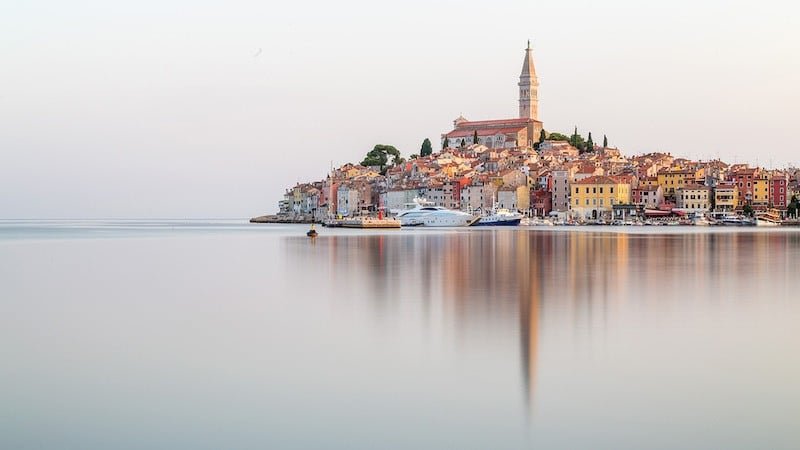
If you want to experience a lesser-trodden Croatian gem, Rovinj is the place for you. With its cobblestone lanes, picturesque architecture, and local life, it’s an authentic spot filled with history and culture enough to rival any Mediterranean coastal city.
3. Dubrovnik
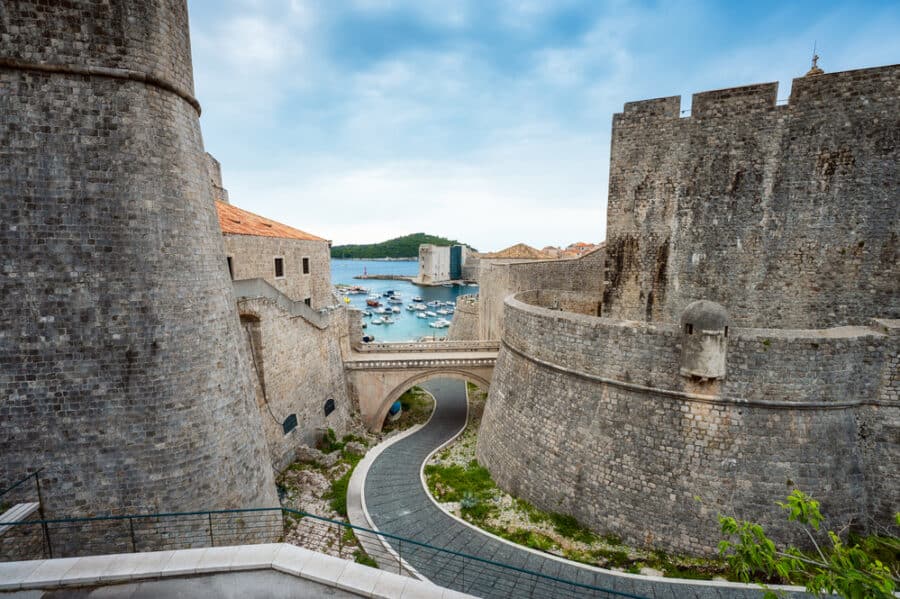
Dubrovnik is full of cultural treasures. One of the main tourist attractions in the country is its Old Town and medieval walls, which attract visitors from far and wide. It also helps that Dubrovnik was heavily used as a filming location in HBO’s TV series Game of Thrones.
4. Pula
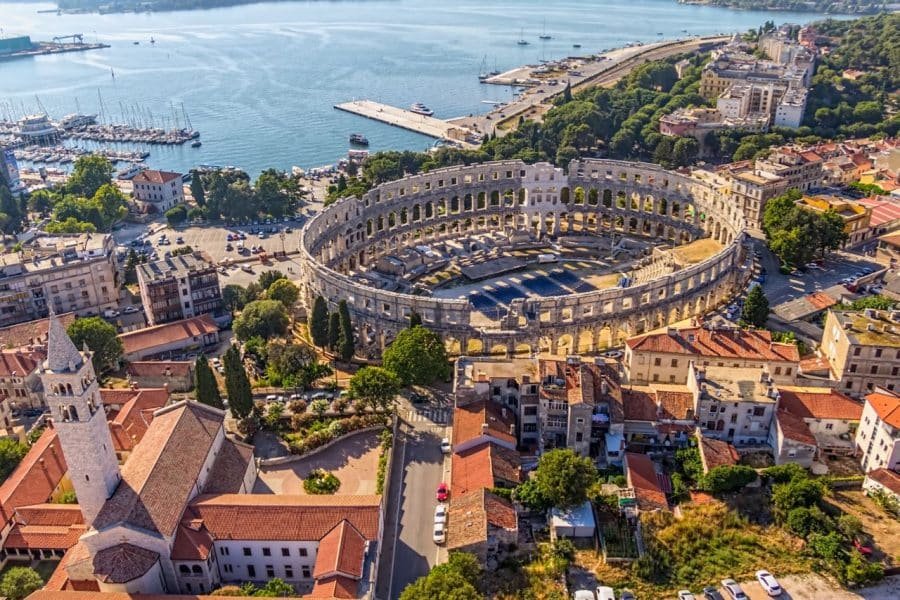
When it comes to Malta vs Croatia in terms of history, you may think the ancient sites of Malta win out. But the old city of Pula in Croatia gives Malta’s ancient wonders a run for their money. Complete with a Roman amphitheater, not to mention captivating views across the Adriatic Sea, it’s hard to deny Pula’s picturesque pull.
5. Split
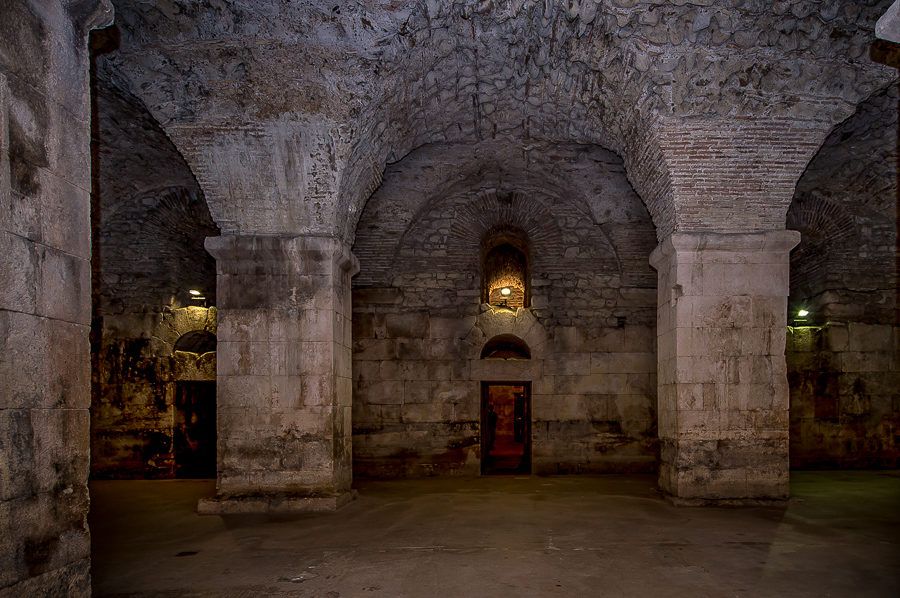
Yet more ancient history awaits in Split, another of Croatia’s coastal gems. It’s also a popular destination for Game of Thrones fans, who like to visit Split and its filming locations for the hit series. The 4th-century Dicoletian’s Palace is a major sight here, too.
6. Croatia’s Beaches And Lengthy Coastline
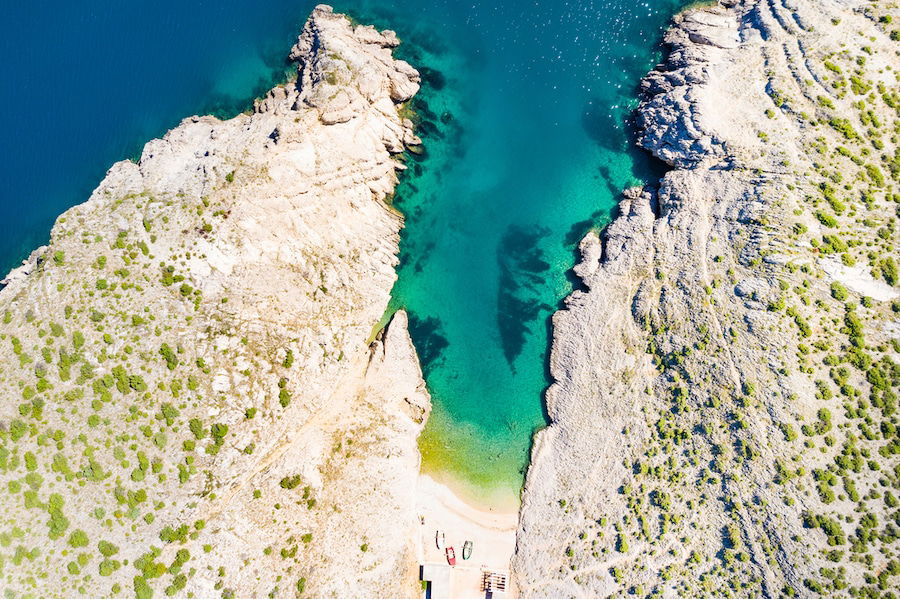
Turquoise seas and unspoiled beaches—the dramatic Dalmatian coast is a big draw for visitors to Croatia. When they’re not seeing the historic sights, tourists flock to the Croatian coastline for blissful, sunny days spent along the shore.
7. Croatian National Parks
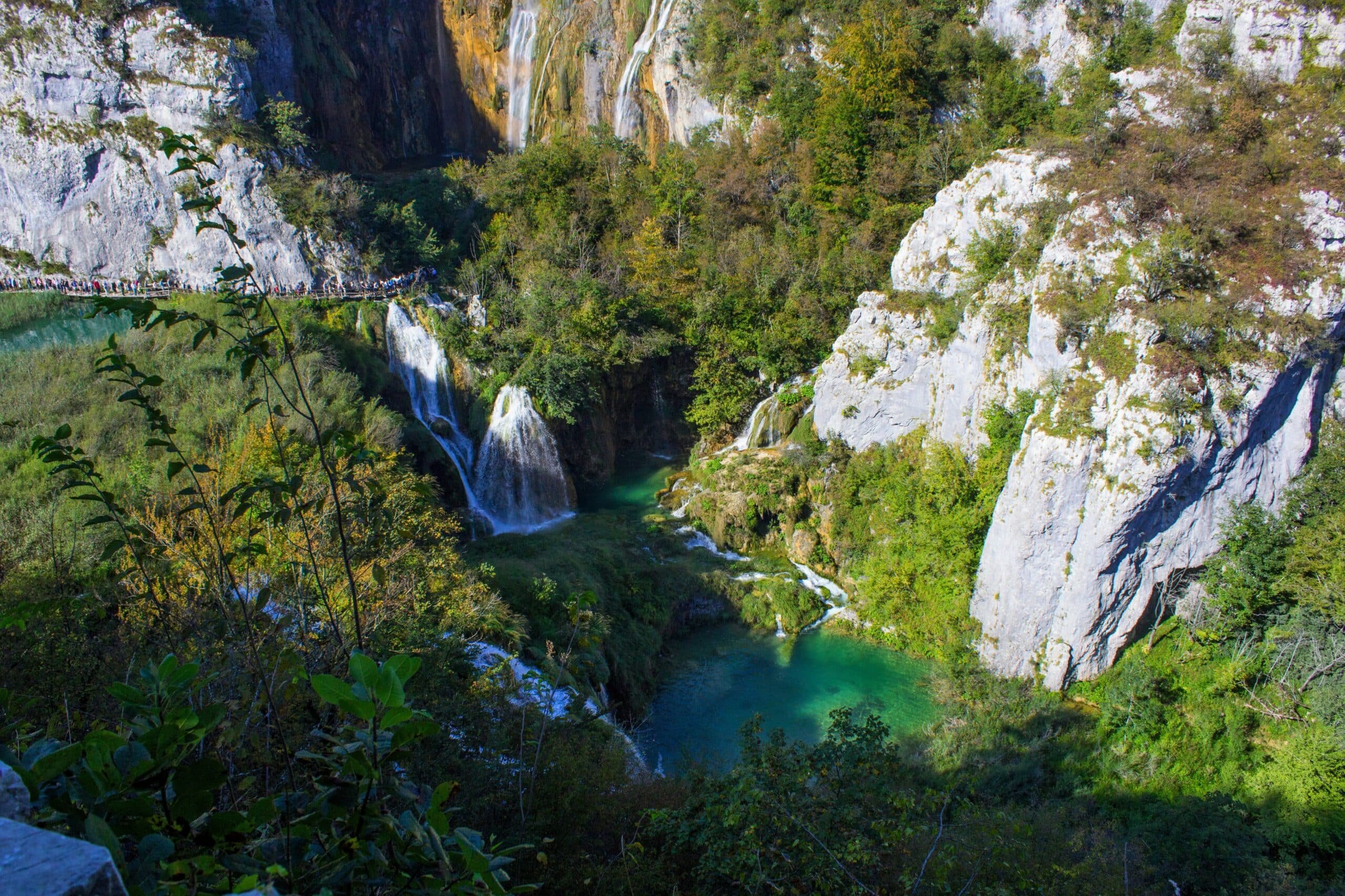
Split and Dubrovnik may get all the attention from cruise ships and weekend visitors, but Croatia’s national parks offer vast and varied breathtaking landscapes that you don’t get in Malta.
Whether you’re seeing the turquoise lakes in the sprawling Plitvice Lakes National Park or marveling at the waterfalls in Krka National Park, Croatia’s natural beauty makes it a must-visit destination.
If you’re on the fence about choosing between Malta and Croatia, think about what kind of natural beauty speaks to you. These parks aren’t just sights to see; they’re experiences that stay with you.
This might be a deciding factor in whether you choose Croatia over Malta for your next trip. Croatia’s beautiful national parks, set among limestone karst mountains and forests (not to mention its intriguing coastline), or Malta’s more typically Mediterranean landscapes—it’s up to you!
7 Reasons To Visit Malta
1. Mdina
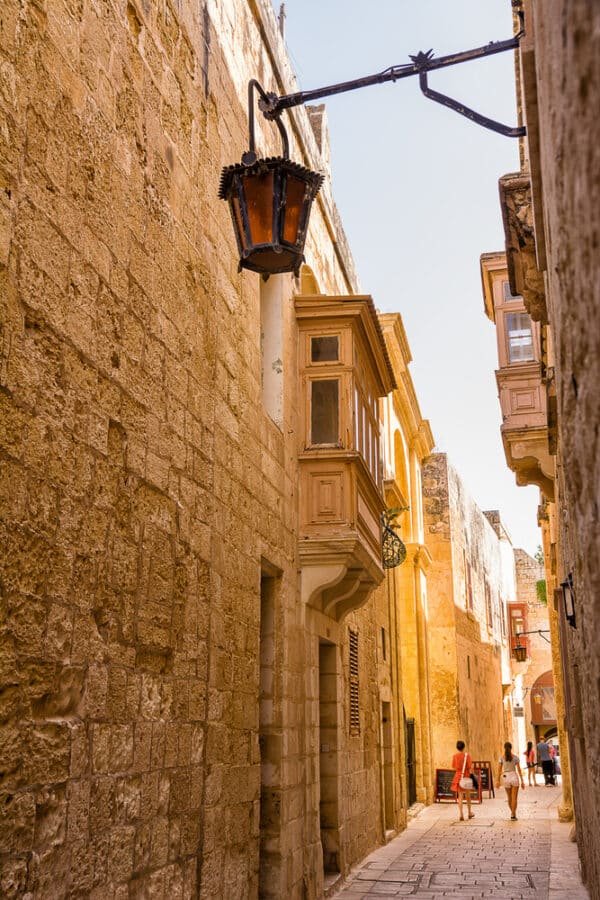
One of Malta’s top destinations for history buffs has got to be the city of Mdina. But it’s not only for history fans. It’s hard to look at a photo of Mdina and not think, “I want to go there!”
It’s a showcase for Malta’s blend of cultures, complete with ancient city walls built under Arabic rule, Baroque churches showing Italian influence, and winding lanes to explore — all surrounded by rolling hills. It’s no wonder that Mdina is on the tentative list to be made a UNESCO World Heritage Site.
2. Prehistoric Temples
Malta is way more than just a tiny island in the middle of the Mediterranean Sea. It may be small, but Malta has a long history that goes back many thousands of years. The UNESCO-recognized Megalithic Temples of Malta is a collection of several ancient temples scattered across the islands.
One of the most famous examples is the Tarxien Temples, a religious complex of stone structures dating back to 3150 BC.
So when it comes to Croatia versus Malta for ancient history, Malta probably wins this one for its intriguing millennia-old ruins. These prehistoric temples are not just important for religious reasons: they are actually some of the world’s oldest freestanding structures. Incredible!
3. Islands Of Gozo And Comino
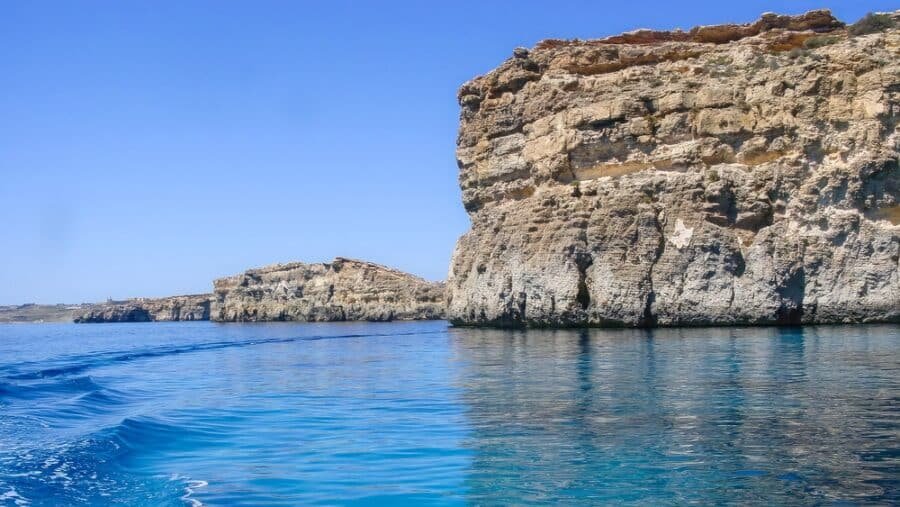
Malta is named after the main island of the archipelago, but there are two other smaller islands to explore on a trip here — Gozo and Comino. Surrounded by a glowing turquoise sea and littered with ancient ruins, these two islands allow you to spend days lounging around by the coast, adventuring to relics of the past, and eating luxurious local cuisine.
These two islands might answer the question of choosing a Croatian or Maltan honeymoon. They feel so far-flung and worlds away from the tourist trail, yet are easily reached from the main island.
4. Sliema
The resort town of Sliema, on Malta’s northeastern coast, has a lot going for it. Ornate architecture, a whole host of bars and restaurants, and an easygoing seafront promenade to stroll along. It’s a modern meets historic slice of Mediterranean charm.
5. Malta’s Blend Of Cultures
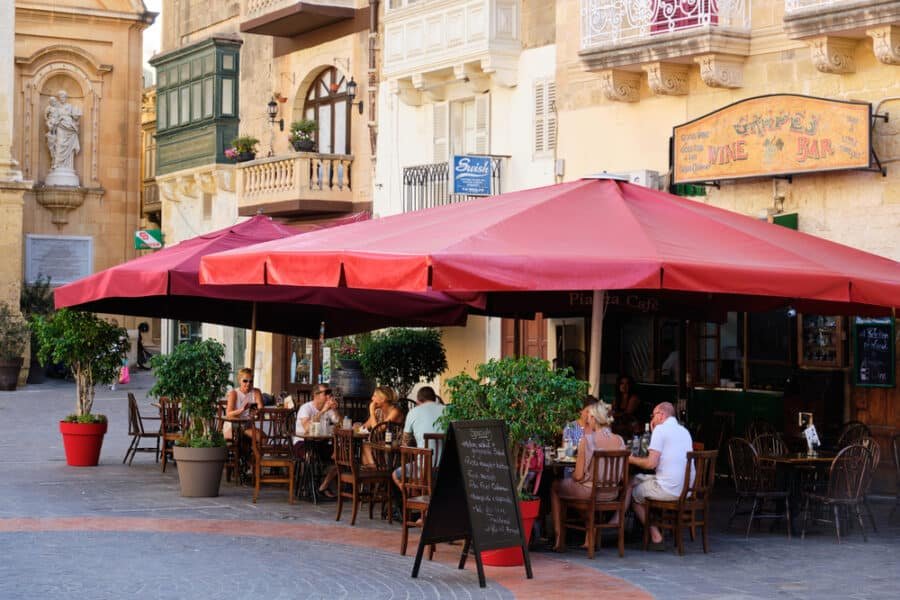
The location of Malta, almost precisely in the middle of the Mediterranean Sea, has made the islands a crossroads of civilizations. A long list of influential empires and other powers have left their mark on this small landmass over the centuries.
After the mysterious Megalithic era, which consisted of people who arrived on the island in the 6th millennium BC, came the Phoenicians. The Phoenicians used the island as a trading post and were followed by the Romans (who used it for the same reason) from 218 BC onwards.
The Arab conquerors didn’t arrive until 870 AD. But they were fairly quickly kicked out by the Normans in 1091. Then came the Sicilian kings, the French, and the British. Each one of these powers has left a lasting mark on Maltese culture.
This blend of cultures can be seen today in everything from its language, architecture, local festivals, and cuisine. It even has British red mailboxes!
6. Valletta
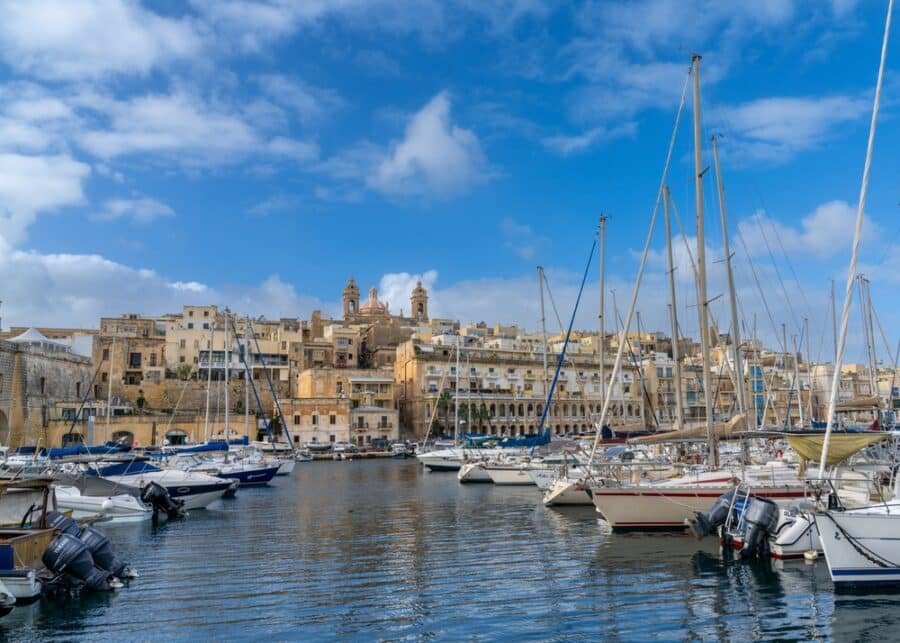
Valletta is Malta’s capital. It’s small but bursting with rich history, stunning cultural sights, and history galore. Established by the Knights of St. John in the 16th century, the walled city may be small, but it’s undeniably picturesque and filled with elegant architecture.
Designated a UNESCO World Heritage Site, it isn’t easy to overstate the unique charm of this capital city. Compared to Croatia’s capital, Zagreb, it’s a complete gem.
7. Diving In Malta
Malta has been recognized multiple times as one of the best dive sites — not only in Europe but in the world. Its stunning underwater landscapes are made up of interesting caves, colorful reefs, and fantastic shipwrecks to explore. Each dive here offers a memorable experience.
Popular dive sites include the Blue Hole, the Coral Gardens, and the Azure Reef.
Brands We Use And Trust
Beaches & Beach Clubs In Croatia Or Malta
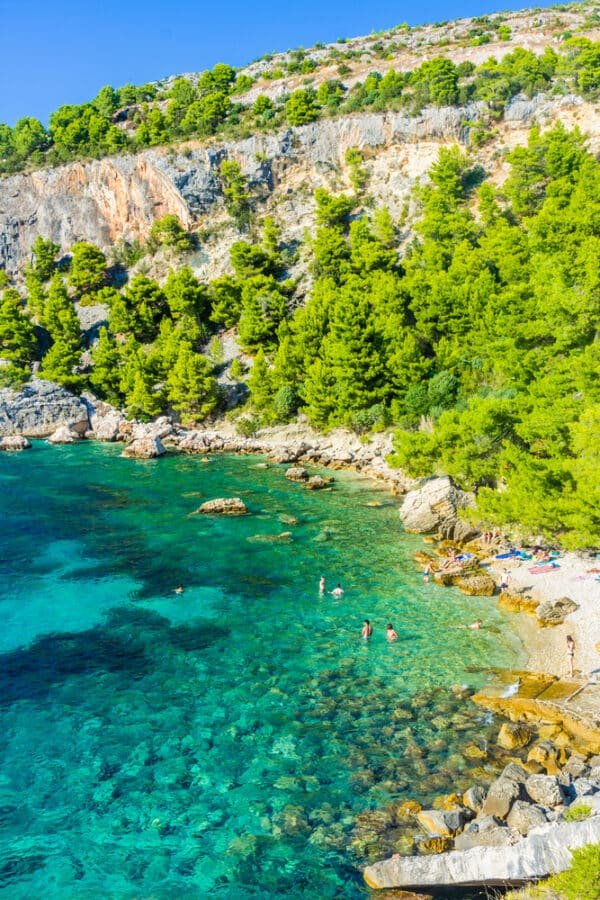
Deciding between the sun-soaked shores of Malta and Croatia for your next beach holiday is like picking between two flavors of ice cream – both are good, but it really depends on what tickles your taste buds. Whichever you choose, you’re in for a treat – don’t forget the sunscreen!
So, let’s break it down to help you figure out where to lay your towel.
Beaches In Malta
Great For Families
Want postcard-perfect sandy beaches with family-friendly vibes? Malta’s your go-to.
If you’re packing buckets and spades and have kids in tow, Malta’s beaches are pretty fab. They’ve got a bunch of family-friendly spots with gentle, shallow waters perfect for paddling and sandcastle engineering. Mellieħa Bay, for instance, is a hit with families for its soft sands and easygoing waves.
Malta also offers tranquil spots like Ghajn Tuffieha, where the sunset views are unbeatable.
Beaches In Croatia
Great For Older Kids & Solo Travelers
Craving dramatic coastlines, pebbly coves, and a mix of solitude and socializing? Set your sights on Croatia.
Croatia tends to have more pebbly beaches, like those around Makarska Riviera. Still, they’re stunningly beautiful and have crystal clear waters – great for older kids who fancy a bit of snorkeling.
For solo travelers or those looking for a serene slice of paradise, Croatia’s vast coastline offers plenty of hidden gems where you can enjoy a quiet read or meditative moments without a volleyball landing on your head. Think secluded coves accessible only by a hike or a boat ride.
Beach Clubs In Malta
Beach clubs and nightlife are where things get lively. Malta might have the edge here with its vibrant scene, especially around areas like St. Julian’s and Paceville, where beach clubs, bars, and nightlife are bustling with energy.
Beach Clubs In Croatia
Croatia isn’t far behind Malta, though, with Hvar and Pag Island serving up a mix of laid-back beach bars and full-on party vibes to suit all moods.
Prices for beach-related costs like rentals and tours are pretty comparable, so they won’t make a massive difference to your wallet.
Budget Needed For Malta Vs. Croatia
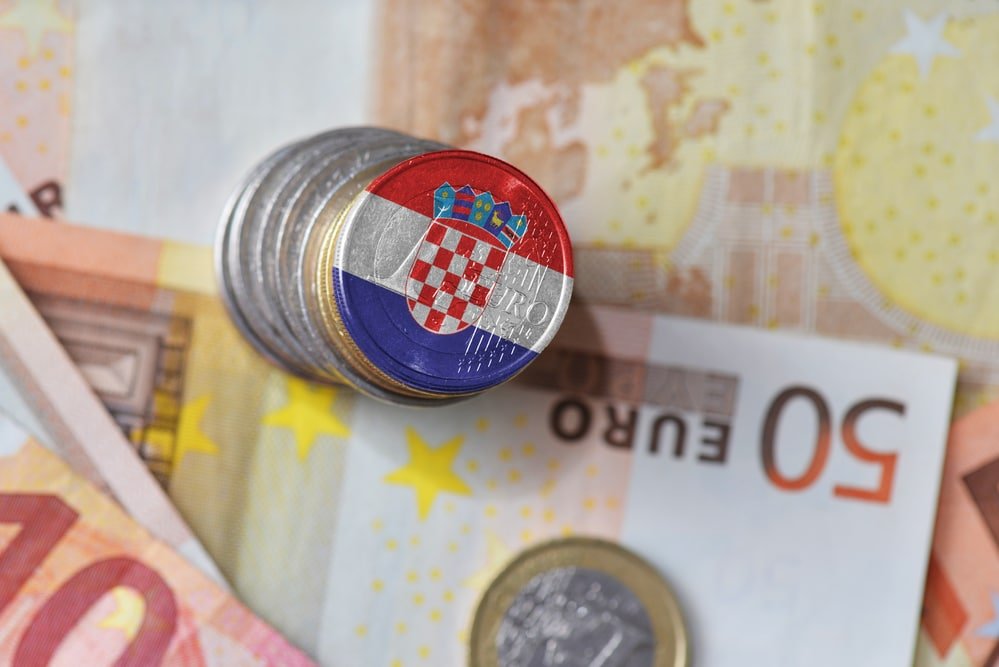
Let’s face it. Working out your next trip usually comes down to your travel budget. If you’re watching your wallet, the decision of Croatia vs Malta might be more about which one is cheaper for you to travel to. So, with that in mind…
Let’s take a look at the money side of things.
Whether you’re really looking forward to seeing some fantastic history, delighting in the delicious local cuisine, or sunbathing on the beach, knowing how much to budget will help you decide between Croatia and Malta.
In terms of budget, it’s good to know that both countries have a lot to offer. The general cost of living comparison statistics reveal that Malta is around 15% more expensive overall.
Croatia
Let’s kick things off by taking a look at Croatia.
You might already have heard that Croatia is reasonably affordable compared to similar European nations. There are plenty of places to eat budget-friendly Croatian cuisine, affordable accommodation options, and low-cost transport.
Overall, it’s a good choice for value for money in terms of travel, but it has become more expensive in recent years, particularly since the nation switched to the Euro at the start of 2023.
Malta
Malta may not be the first place you think of when it comes to cheap travel but don’t overlook it. Yes, it’s true that you could spend a whole heap of cash on a luxury holiday to Malta, but in reality, you really don’t need to.
Croatia is slightly cheaper overall compared to Malta, but you can travel to Malta on a budget. There are plenty of ways to make a trip here more affordable, like traveling during the shoulder season, for example.
Transportation In Malta Or Croatia
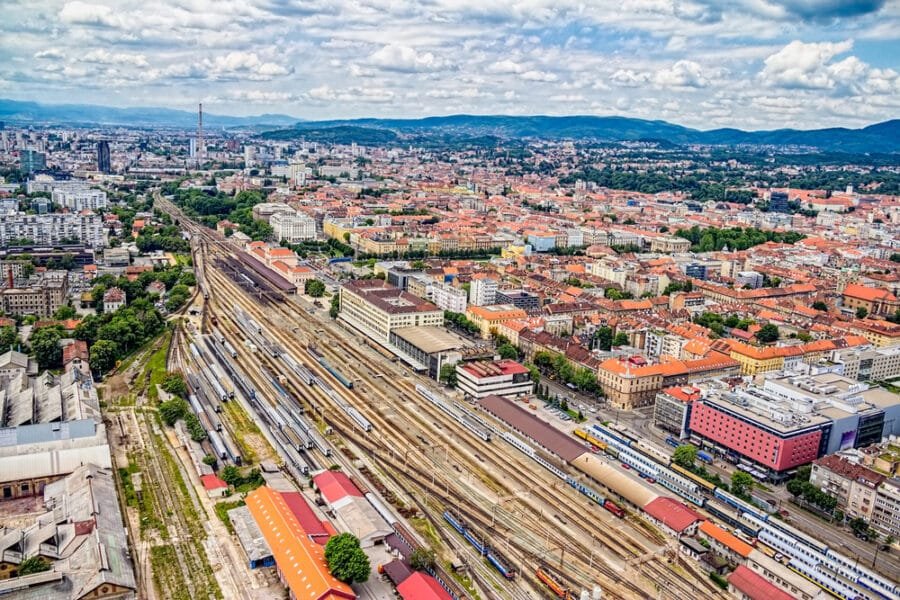
Here are some helpful travel tips and insider information to help you plan how to get around these two European countries. Learning more about both nations’ transport networks will help you choose between Croatia and Malta, especially if you want to travel between cities and tourist attractions while on vacation.
Driving
Renting a car in Malta is a good idea for travelers who want to see a more local side of life across the islands. The public transport system doesn’t serve many of the smaller towns and villages, and a whole swathe of beaches is unreachable without a car.
The only downside is that traffic in Malta can be really bad. Congestion is most felt in larger urban areas such as Valletta and its nearby towns. Parking can also be an absolute nightmare.
There’s also the headache of navigating the old, narrow lanes, which are made even more difficult for many travelers who drive on the left in Malta.
The upside is that renting a car in Malta is cheap. In fact, Maltese car rental prices are some of the cheapest in the whole of Europe!
So, overall, hiring a car seems like a really enticing way to get around. Just make sure to book in advance during the peak travel season.
Driving in Croatia is a different experience from driving in Malta. For one thing, Croatia is a much bigger place, so having your own vehicle can mean seeing much more of what the country has to offer.
Hiring a car is affordable, but at the peak of the summer, it’s best to book in advance to get a good deal. The only real consideration is that all of the highways and some other main roads are toll roads.
If you’re on a budget, the cost of tolls might make you rethink driving. There’s also an excellent public transportation network covering most of the country, and if you’re in a city, you definitely don’t need to hire a car.
Buses
Croatia is connected by an excellent bus network, which makes getting from place to place straightforward. The long-distance buses vary in price as there are several different companies to choose from. You can book in advance and get a better deal on a ticket, which is always a good idea.
Malta’s iconic buses, on the other hand, are not quite as efficient. As it’s a much smaller place, there’s not much need for long-distance buses. Buses will take you to the most popular tourist sites like beaches and tourist towns, but you can’t rely on them to see all of the islands.
Croatian Ferries
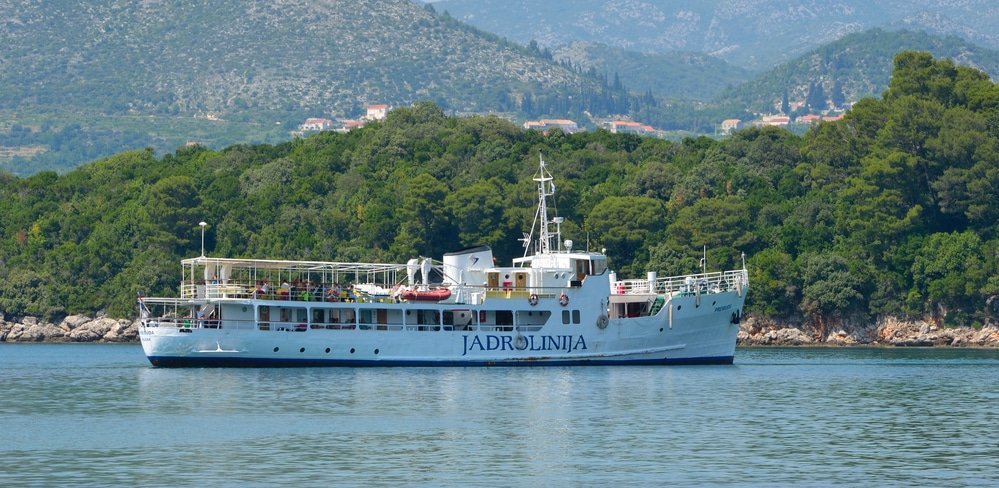
Croatia is also the perfect place to get around by boat. The country’s many ferry connections are fun, clean, and run on time. The only real downside is that they can get really busy in the summer months.
Taking the car ferry is really convenient for those of you who want to see the sights in your own vehicle. Make sure to turn up at least an hour early so you don’t have to contend with any last-minute delays. Expect long queues and ferries that fill up quickly.
Overall, whether you’re driving through the captivating Croatian countryside or hopping on a bus in Malta, both destinations have their ups and downs when it comes to transport. With a bit of planning and using these tips, you should be able to get around without too much trouble at all.
Getting Around Malta & Croatia (Quick Guides)
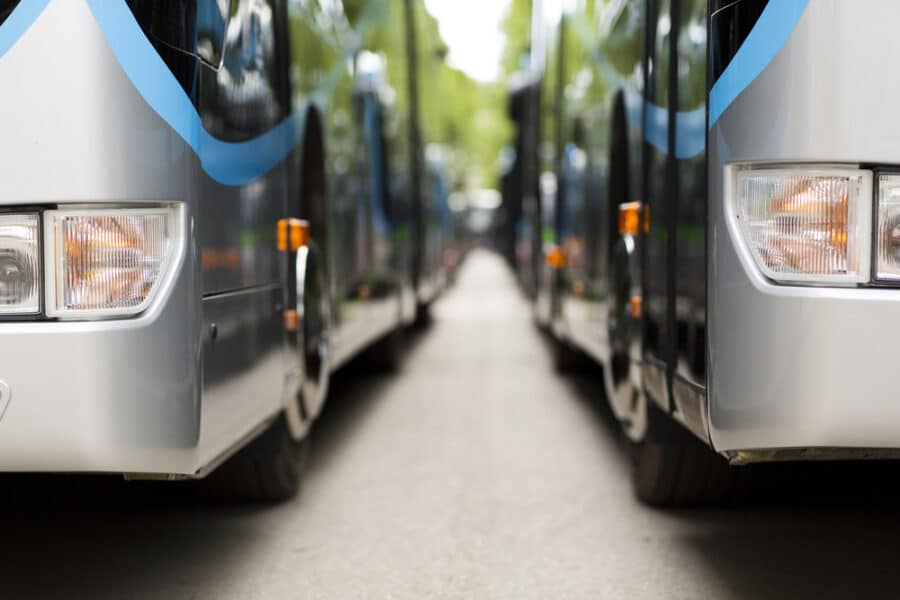
Traveling around both Malta and Croatia is part of the fun! Here is a guide to help you navigate both countries…
Transportation In Malta
Malta’s transport is not always the best, as it is quite a small collection of islands. You will have to rely on a combination of buses, ferries, and rental cars to get from A to B.
- Trains: Though Malta did have a train network that opened in the late 19th century, it closed in 1931, and nothing has appeared in the way of railway travel since.
- Buses: Malta Public Transport runs a selection of bus routes around Malta and Gozo. Most of these yellow buses start at Valletta Bus Station and run a regular service a few times each hour.
- Car Rentals: If you like the idea of traveling at your own pace, a car rental is for you. Renting a small car in Malta is cheap, and various local companies offer car hire.
- Ferries: Ferries are necessary to travel between Malta, Gozo, and Comino. There are even harbor ferries that run between coastal destinations from Valletta.
- Within Cities: It’s best to explore Malta on foot or via buses. Bike-share services and taxis are also available.
Transportation In Croatia
With a long coastline and lush countryside, not to mention all those islands, Croatia can be beautiful to travel around. Here are a few ways you can get around this Adriatic gem.
- Buses: Numerous bus companies operate services in Croatia. These are low-cost and reliable, and you can book online in advance.
- Trains: Slower than bus travel but still very affordable, trains can be helpful in getting around to major cities. The train network isn’t that extensive, however.
- Car Rentals: Car rental offers much more flexibility in terms of where you can travel to in Croatia. But don’t forget you have to pay tolls and factor in the cost of gas and parking into the equation.
- Ferries: Ferries are a must if you’re touring around Croatia’s coastline. These vary depending on the season but are comfortable and reliable.
- Within Cities: Taxis and buses make up most urban public transport in Croatian cities, but Zagreb has its own tram network and funicular railway.
Accommodation In Croatia Or Malta

Figuring out your options for accommodation in Malta and Croatia can be fun. Both boast some wonderful places to stay. Let’s examine options in both countries so you can decide whether Malta or Croatia is better.
Malta: Affordable Luxury & Low-Cost Accommodation
Malta has long been known as a resort getaway and a haven for relatively affordable luxury travel. The island nation offers some sleek options for many types of travelers.
- Luxury Hotels: Malta has an exciting collection of luxury hotels. Often located inside historic buildings, these polished boutique stays provide high-end accommodation from upwards of €100 per night.
- Mid-range Hotels: This is the main form of accommodation in Malta. It’s possible to find a clean and comfortable hotel in a good location for around €70 per night.
- Budget Options: Malta has hostels and a few B&B-type accommodations where you can expect to pay upwards of €20 per night and €30 for a private room.
- Vacation Rentals: Airbnb and Vrbos are great ways to save money when you’re traveling in Malta. Often, these rentals come with kitchens, so you’ll be able to keep costs low by cooking your own meals and having that valuable feeling of living like a local.
Croatia: From Coastal Retreats To Affordable City Stays
Croatia offers a wide range of accommodation options. This Adriatic nation has something for every budget and preference. Let’s find out more.
- Coastal Resorts: There are plenty of resorts strung out along Croatia’s coast. These are great places to stay if you’re traveling with children or feel like not lifting a finger during a tour trip, which can be worth the extra cost. Prices are around €100-250 per night.
- City Hotels: A perfect place to stay if you want an excellent location for exploring, Croatia’s towns and cities boast a wide variety of smart city hotels. Expect to pay between €50-€150 per night for a city hotel in Zagreb or Split.
- Hostels and Guesthouses: There are plenty of low-cost guesthouses and hostels in Croatia, making traveling on a shoestring budget fairly easy. A dorm room can cost between €20 and €40.
- Private Rentals: This is also a popular accommodation option in Croatia. If you want freedom, the feeling of staying in a home away from home, this is the choice for you.
A Few Tips For Your Stay
- Book in Advance: Always book as early as possible — especially in high season. That way, you’ll be more likely to avoid last-minute price hikes and avoid being disappointed when a hotel you want to stay at gets fully booked before you’re able to reserve your spot.
- Location Matters: To save money, consider staying outside the major tourist hotspots. Staying a bus ride away from the city center or in lesser-known areas often means cheaper accommodation and a chance to experience a more authentic side of the destination.
In short, both Malta and Croatia offer a wide range of accommodation options. There’s something for everyone here, whether you’re traveling in luxury or on a shoestring budget.
Food & Cuisine In Croatia Vs Malta
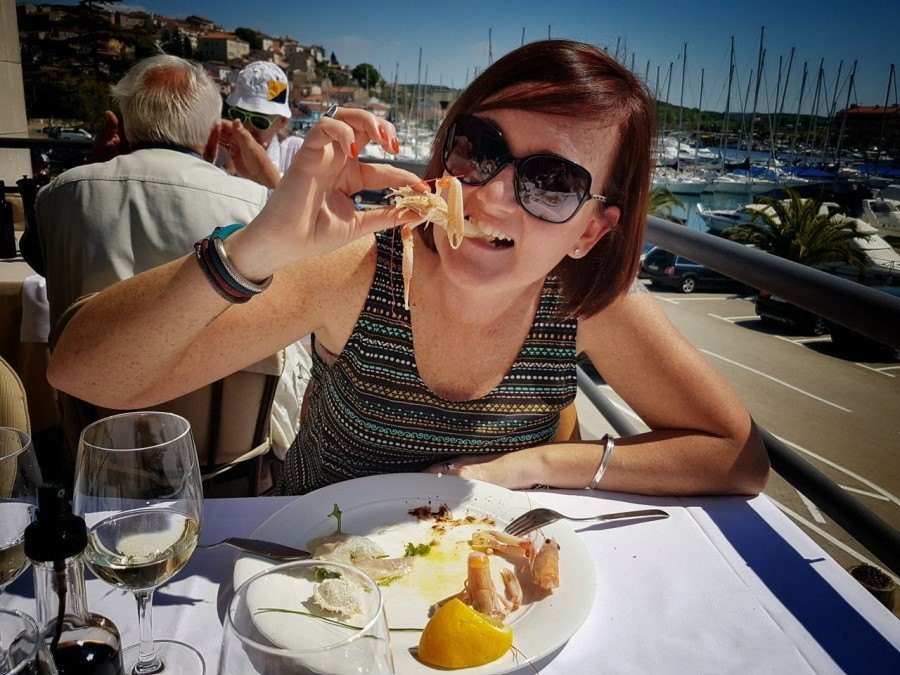
Unlike Italy, Greece, and other Mediterranean nations, neither Croatia nor Malta are known internationally for their cuisines. But that doesn’t mean the culinary offerings in both countries aren’t exciting or delicious — they are! Here’s a guide to the gastronomic delights you can find in Malta and Croatia.
Malta: A Showcase Of Different Cultures In Every Bite
Maltese cuisine is a world of its own. Its food reflects Italian influences and touches of French, Spanish, and even British cooking.
- Gozitan Ftira is Malta’s answer to Italian pizza. Popular on the island of Gozo, it is made using traditional ftira bread, which is cooked in an oven with various toppings. Anchovies, tomatoes, and even thinly sliced potatoes are usual choices.
- Pastries: Malta offers several different kinds of pastries, both sweet and savory. There’s Cassatt, made using shortcrust pastry, which is small and often filled with peas or ricotta, and the larger pastizzi, to name just two.
- Kapunata: Kapunata is similar to French ratatouille, but this hearty tomato-based stew is based on Sicilian caponata. It’s often served with fresh basil on top for extra deliciousness.
Maltese cuisine is an interesting mix of just about everything good the Mediterranean has to offer, so it is worth your time if you want to try some unique dishes.
Croatia: An Adriatic Feast

Croatian cuisine may not be world-famous, but with roots in Slavic traditional cooking and Italian cuisine alike, it’s a bit of a hidden gem for foodies.
- Seafood: Croatia is a coastal nation with plenty of seafood on offer along its long coastline. Expect freshly grilled fish, delicious oysters, and even octopus salad.
- Meat Dishes: Head inland for a decidedly different palate than the coastal fare on offer. Dishes here are flavored with traditional herbs and feel hearty and homey.
- Truffles and Olive Oil: In the north, the Istrian peninsula is a must for anybody who likes olive oil or truffles — the region is famed for this produce.
- Wine: Wine lovers shouldn’t pass up the opportunity to sample some of Croatia’s regional wines. If you like a refreshing, crisp white, try out Malvazija. But if you’re more of a red drinker, seek out a glass or two or Plavac Mali.
Foodies might prefer to go to Croatia. With its wide variety of regional cuisines, there are many different specialties to try. In essence, because Croatia is a larger country, there’s just more diversity when it comes to food.
Weather In Malta Vs. Croatia
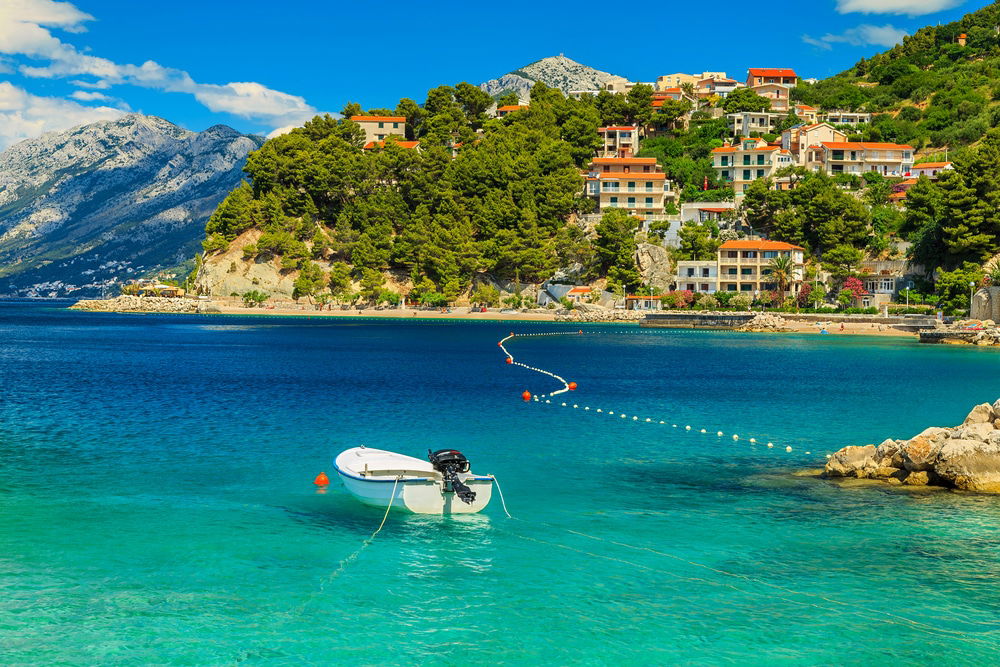 Deciding when to visit Malta or Croatia is crucial to making the most of your trip. While both countries enjoy a Mediterranean climate, the subtle differences in weather throughout the year can influence your travel experience. Whether you’re after sunny beach days or exploring historical sites in milder temperatures, knowing what to expect each season can help you choose the best time to visit.
Deciding when to visit Malta or Croatia is crucial to making the most of your trip. While both countries enjoy a Mediterranean climate, the subtle differences in weather throughout the year can influence your travel experience. Whether you’re after sunny beach days or exploring historical sites in milder temperatures, knowing what to expect each season can help you choose the best time to visit.
Here’s a breakdown of the climate in Malta and Croatia, along with a comparison table to help you figure out the best time of year for your visit.
| Season | Malta | Croatia |
|---|---|---|
| Spring | Mild and pleasant, 15°C to 25°C (59°F to 77°F), low rainfall. | Mild with warming coastal areas, 10°C to 25°C (50°F to 77°F), lush parks. |
| Summer | Hot and dry, 30°C to 35°C (86°F to 95°F), ideal for beaches. | Hot and sunny, 25°C to 35°C (77°F to 95°F), perfect for beaches and islands. |
| Autumn | Warm, 20°C to 28°C (68°F to 82°F), warm seas, fewer crowds. | Mild and pleasant, 15°C to 25°C (59°F to 77°F), warm seas, quieter tourism. |
| Winter | Mild, 10°C to 15°C (50°F to 59°F), more frequent rain, occasional sun. | Mild along the coast, 5°C to 15°C (41°F to 59°F); colder inland with possible snow. |
Malta: Warm Seas And Sunny Beaches
Malta is renowned for its sunny weather and warm sea temperatures, making it a top destination for beach lovers and those seeking mild, enjoyable climates year-round.
Spring (April to June): Spring in Malta is mild and pleasant, with temperatures ranging from 15°C to 25°C (59°F to 77°F) and minimal rainfall. This season offers a comfortable climate for exploring historic sites and enjoying outdoor activities. It’s an ideal time to visit before the peak summer heat arrives.
Summer (July to August): The Maltese summer is hot and dry, with temperatures often reaching 30°C to 35°C (86°F to 95°F). Expect long, sunny days perfect for beachgoers, though it can be quite hot for some outdoor activities. Rain is rare, making it a prime time to enjoy the island’s stunning coastlines.
Autumn (September to October): Autumn remains warm in Malta, with temperatures ranging from 20°C to 28°C (68°F to 82°F). After the hot summer, the sea is still pleasant for swimming, and the crowds begin to thin out, offering a more relaxed atmosphere for exploring.
Winter (November to March): Malta’s winters are mild compared to other European destinations, with temperatures rarely dipping below 10°C to 15°C (50°F to 59°F). While there’s more rainfall during this period, sunny days are still common, making Malta a great spot for winter sun. The coldest months, January and February, are still relatively mild, with no snowfall recorded since 1962.
Croatia: Sparkling Seas And Warm Evenings
Croatia enjoys a Mediterranean climate with hot summers and mild winters, offering a diverse weather experience that suits both beach vacations and cultural explorations.
Spring (April to June): Spring is an excellent time to visit Croatia, with temperatures ranging from 10°C to 25°C (50°F to 77°F). Coastal areas begin to warm up, making it a perfect time to explore the country’s stunning national parks, which are lush and vibrant during this season. It’s also before the busy tourist season, allowing for a more peaceful visit.
Summer (July to August): Croatian summers are characterized by hot, sunny weather, particularly along the coast where temperatures range from 25°C to 35°C (77°F to 95°F). This is the peak tourist season, ideal for beach lovers, island hopping, and enjoying the country’s vibrant nightlife. The glistening, turquoise seas and gleaming beaches are especially inviting during this time.
Autumn (September to October): Autumn in Croatia is still relatively warm, with temperatures ranging from 15°C to 25°C (59°F to 77°F). The sea remains pleasant for swimming, and the weather is mild enough for outdoor activities and exploring historic sites. The crowds are thinner than in summer, making it a great time to visit.
Winter (November to March): Winters in Croatia are generally mild along the coast, with temperatures between 5°C to 15°C (41°F to 59°F). Inland areas, especially around Zagreb, can experience colder weather and even snowfall, offering a different side of the country. While coastal regions may be quieter, this season is excellent for those looking to experience Croatia without the summer crowds.
For me, the shoulder seasons in both Malta and Croatia (spring and autumn) are good for two reasons: There are fewer crowds, and it’s not super hot anymore.
But if you like the heat or you want to mingle with the crowds, then you’ll love summer. Or maybe you’d prefer to budget and see the countries free of tourists, in which case winter is probably right for you.
Pick what feels right, and you’re bound to have a fantastic time weather-wise!
Safety In Croatia Vs Malta
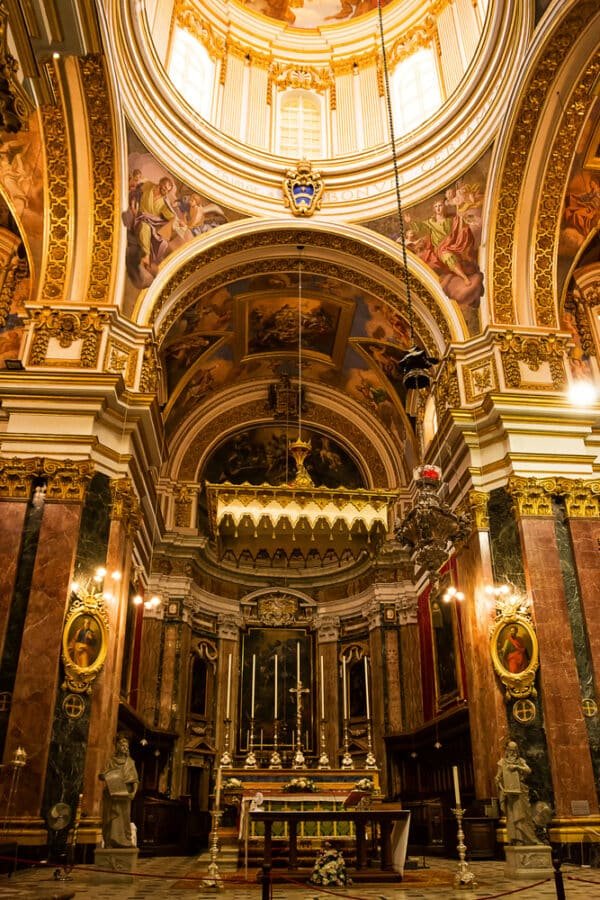
When planning your trip, safety is an important consideration, and both Malta and Croatia rank high as safe travel destinations. However, understanding the nuances of each country’s safety landscape can help ensure a smooth and enjoyable journey. Here’s a detailed look at what you need to know about safety in Malta and Croatia.
Safety in Malta
General Safety
- Malta is one of the safest countries in Europe, with low crime rates and a generally peaceful atmosphere. Violent crime is rare, and the island is a popular destination for solo travelers and families alike.
- However, as with any tourist hotspot, petty crime such as pickpocketing can occur, especially in crowded areas like Valletta, St. Julian’s, and popular beach resorts. Be mindful of your belongings, particularly in busy tourist zones and on public transportation.
- The island’s small size and close-knit communities contribute to a strong sense of safety and security.
Healthcare
- Malta’s healthcare system is highly regarded, with well-equipped hospitals and clinics throughout the island. English is widely spoken among medical professionals, making it easy for travelers to communicate their needs.
- Pharmacies are abundant and provide over-the-counter medications as well as advice for minor health concerns.
- It’s advisable to have travel insurance that covers any medical treatments you might need during your stay, especially since Malta’s private healthcare services can be expensive.
Emergency Contacts
- The emergency number in Malta is 112, which connects you to the police, fire service, and ambulance services. This number is free to dial and is the quickest way to reach emergency assistance.
- Police stations are located in most towns, and tourist police are available in popular areas to assist visitors.
Additional Considerations
- Malta’s roads can be narrow and congested, particularly in urban areas. Exercise caution when driving, especially since traffic moves on the left side of the road.
- The island’s compact size means that help is usually close by, whether you’re in a city or a rural area.
Safety in Croatia
General Safety
- Croatia is also considered a safe destination with a low crime rate, particularly outside the major tourist hubs. Violent crime is rare, and the country has a strong police presence in popular areas.
- Petty crime, such as pickpocketing, can occur in busy tourist spots like Dubrovnik, Split, and Zagreb, especially during peak travel seasons. As in Malta, it is advisable to keep your belongings secure and be aware of your surroundings.
- Croatia’s natural environment poses some risks, especially for hikers and outdoor enthusiasts. To avoid accidents, always check local weather conditions and stay on marked trails in national parks.
Healthcare
- Croatia offers a good standard of healthcare, with hospitals and clinics in all major cities and tourist areas. English-speaking medical staff are common, particularly in tourist regions.
- Pharmacies are widely available, and medications for minor ailments can be easily obtained. However, it’s recommended that you bring any specific medications you need from home.
- Travel insurance is essential, particularly if you plan to engage in outdoor activities like hiking, boating, or diving, as Croatia’s adventure tourism sector is popular.
Emergency Contacts
- Like Malta, Croatia’s emergency number is 112, which is free to dial and connects you to all emergency services, including police, fire departments, and medical assistance.
- In tourist areas, police stations are readily accessible, and officers are accustomed to assisting international visitors.
Additional Considerations
- Road safety in Croatia is generally good, with well-maintained highways and clear signage. However, some rural roads can be narrow and winding, requiring extra caution.
- If you’re planning to drive, be aware that Croatia has a zero-tolerance policy for drunk driving, and penalties are severe.
- Croatia’s coastline is dotted with numerous islands, and while ferry services are reliable, it’s important to follow safety guidelines when traveling by boat, especially in rough weather.
Which Country is Safer?
In summary, both Malta and Croatia are safe destinations, but the nature of safety concerns varies slightly. Malta’s smaller size and lower levels of congestion make it easier to navigate and manage.
At the same time, Croatia offers more diverse experiences but requires a bit more caution in rural areas and on the road. Whichever destination you choose, staying aware of your surroundings and following local guidelines will ensure a safe and enjoyable trip.
Move This Adventure To Your Inbox & Get An Instant Freebie

No spam. Unsubscribe at any time.
Road Trips Croatia vs. Malta
When it comes to road trips, both Croatia and Malta offer unique experiences, but they differ significantly in terms of scale, scenery, and road conditions. Here’s a breakdown of what to expect in each country, helping you decide which destination offers the better road trip experience.
Croatia: A Road Tripper’s Dream
Scale and Variety
- Extensive Routes: Croatia, with its vast and diverse landscapes, is a road trip haven. The country offers a variety of routes that can take you through coastal towns, historic cities, mountainous regions, and even lush national parks.
- Scenic Drives: The Adriatic Highway, which runs along the coast, is one of Europe’s most beautiful drives. It offers stunning views of the Adriatic Sea and access to numerous islands via ferries. Inland routes provide a different kind of beauty, with rolling hills, vineyards, and medieval castles dotting the landscape.
Road Conditions and Comfort
- High-Quality Roads: Croatia has a well-maintained road network, especially along the major highways and coastal roads. The main highways are modern and well-signposted, ensuring a smooth driving experience.
- Diverse Terrain: Croatia’s driving experience is varied, from winding coastal roads to straight highways through the countryside. You can enjoy everything from leisurely coastal drives to more challenging mountain routes.
- Convenience: Gas stations, rest areas, and roadside restaurants are plentiful, especially along popular tourist routes. Croatia’s road infrastructure makes it easy to explore at your own pace, whether you’re navigating city streets or rural roads.
Highlights of a Croatian Road Trip
- Adriatic Coastline: Drive from Split to Dubrovnik, passing through charming towns like Makarska, and enjoy breathtaking coastal views.
- Istria Peninsula: Explore the picturesque villages, vineyards, and coastal towns of Istria, including Rovinj and Pula.
- National Parks: Take detours to visit Plitvice Lakes and Krka National Parks, where you can stretch your legs and enjoy some of Croatia’s most stunning natural scenery.
Malta: Compact and Manageable
Scale and Variety
- Compact Routes: Malta’s small size makes it perfect for short road trips. You can drive across the entire island in about an hour, making it an ideal destination for travelers who want to see a lot in a short amount of time.
- Historic and Scenic Drives: The island’s roads will take you through centuries-old cities, rugged coastlines, and quaint fishing villages. Every turn seems to reveal a new historical site or panoramic view of the Mediterranean.
Road Conditions and Comfort
- Mixed Road Quality: While the main roads in Malta are generally in good condition, some of the smaller, rural roads can be narrow and bumpy. Driving in urban areas, especially in Valletta, can be challenging due to narrow streets and heavy traffic.
- Traffic and Congestion: Malta’s small size and high population density can lead to traffic congestion, particularly in urban areas. Parking can also be a challenge, especially in popular tourist spots.
- Convenience: Gas stations are available but less frequent than in Croatia. The island’s compact size means you’re never far from a place to refuel or grab a bite to eat, but road trip amenities are more limited compared to Croatia.
Highlights of a Maltese Road Trip
- Historical Routes: Drive from Valletta to Mdina, exploring ancient walled cities and enjoying panoramic views of the countryside.
- Coastal Drives: Explore the Dingli Cliffs and the seaside villages along Malta’s rugged western coastline, offering breathtaking views and opportunities to visit secluded bays.
- Island Hopping: Although Malta is small, you can extend your road trip by taking a ferry to the nearby islands of Gozo and Comino, where you can continue your exploration.
Which Destination is Better for Road Trips?
if you’re looking for extensive road trips with diverse landscapes and a high degree of comfort, Croatia is the clear winner. However, if you prefer a more compact, manageable road trip that allows you to explore a lot in a little time, Malta offers its own unique charm.
Visiting Both – Transport From Croatia To Malta
If you’ve already decided, that’s great! But if you still can’t decide and you’ve got the budget, you could always visit both and travel from one to the other!
They’re both European countries, so the journey is doable and will not take hours on end.
Getting from Malta to Croatia (or vice versa) is simple. Here’s what you need to know:
Flights
When you’re working out how to get from Croatia to Malta, your best option is to take a flight. There are over 400 flights per week between Malta’s Valletta Airport and Zagreb Airport, with 11 airlines flying the route. It takes just 3 hours and 24 minutes.
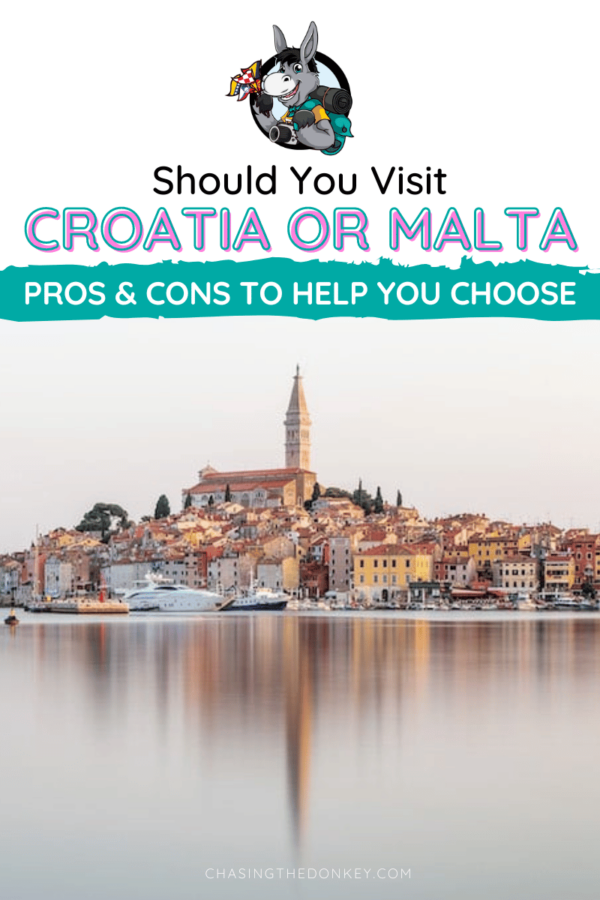
Wrap-Up On How To Choose Between Malta & Croatia
Malta and Croatia offer incredible travel experiences, and the truth is you can’t go wrong with either.
There are similarities and differences between the two nations. One similarity is that they both have gorgeous coastlines where coves, beaches, and turquoise seas await travelers who love to spend their vacations along the shoreline.
But if you’re looking for an adventure destination where you can hop on a day trip to various tiny islands and feel like a true explorer, Croatia may be the one for you.
When it comes to late-night entertainment, there is no contender for the nightlife in Croatia vs. Malta—Croatia knows how to party! But that doesn’t mean Malta doesn’t have its own party scene; look at Paceville.
For history fans, while Croatia is rich in Venetian wonders and some Roman relics, I would say Malta over Croatia for the sheer wonder of its ancient sites. You don’t get much older than those megalithic temples!
Both countries are worth visiting. It all comes down to your budget and your personal taste.
FAQ: Croatia Vs. Malta
Which destination is better, Croatia or Malta?
Both Croatia and Malta offer unique experiences as Mediterranean vacation spots. Croatia is renowned for its stunning coastlines, diverse national parks, and numerous islands, making it ideal for outdoor adventures and island hopping. Malta, though smaller, boasts a rich cultural heritage, historic sites, and beautiful landscapes, making each destination special in its own right, depending on what you’re looking for.
Is Malta cheaper than Croatia?
Malta can be slightly cheaper when it comes to food and drinks, making it an attractive option for budget-conscious travelers. However, overall costs such as accommodation might be higher in Malta, with Croatia offering more affordable options, especially in terms of mid-range and budget accommodations.
Does Croatia have better food than Malta?
Croatia’s cuisine is diverse and offers a broader selection compared to Malta’s culinary scene. From hearty mainland dishes to fresh seafood along the Dalmatian coast, Croatia is favored for its variety and regional specialties. Malta’s food, influenced by various cultures, is unique and flavorful but less varied than Croatia’s.
Which country has better national parks, Malta or Croatia?
Croatia is the clear winner when it comes to national parks, boasting a stunning collection including the iconic Plitvice Lakes and Krka Waterfalls. While Malta has its own natural reserves and parks, Croatia offers more options for outdoor adventures and breathtaking landscapes.
What about beaches?
Croatia is famous for its picturesque pebbled beaches and over 1,000 islands, which provide plenty of options for sunbathing, swimming, and snorkeling. Malta has beautiful beaches, too, but with fewer choices overall, making Croatia the better option for beach lovers.
Which country is better for road trips?
Malta’s compact size makes it ideal for quick and manageable road trips, allowing travelers to see a lot in a short time. Croatia, on the other hand, offers longer, more varied scenic drives, especially along the Adriatic Sea, but its larger size means you’ll need more time to explore.
Does Croatia or Malta have a more interesting history?
Both countries have rich and fascinating histories. Croatia’s history is marked by influences from the Roman and Byzantine eras, among others, while Malta showcases its past with Neolithic sites and the legacy of the Knights of St. John. Each has captivating historical sites worth exploring, making both destinations appealing to history enthusiasts.
Is one country better for luxury travel?
Croatia has developed into a luxury travel hotspot, with upscale resorts, fine dining, and Michelin-starred restaurants, especially in areas like Dubrovnik and Hvar. Malta is emerging as a destination for luxury travel, offering a more intimate but less extensive range of high-end experiences compared to Croatia.
Which destination is safer for solo travelers?
Both Croatia and Malta are safe destinations for solo travelers. English is widely spoken in both countries, which enhances communication and overall comfort for those traveling alone. You can expect a friendly and welcoming environment in either destination.
Which country has better weather?
Malta enjoys a warmer climate with a longer summer season, making it ideal for those seeking consistent sunny weather year-round. Croatia, while also having hot summers along the coast, can experience colder winters, especially inland, with occasional snowfall. If you prefer consistently warm weather, Malta may be the better choice.
Whichever country you choose, they both have historical and cultural treasures and offer you an amazing adventure — Croatia and Malta await!

